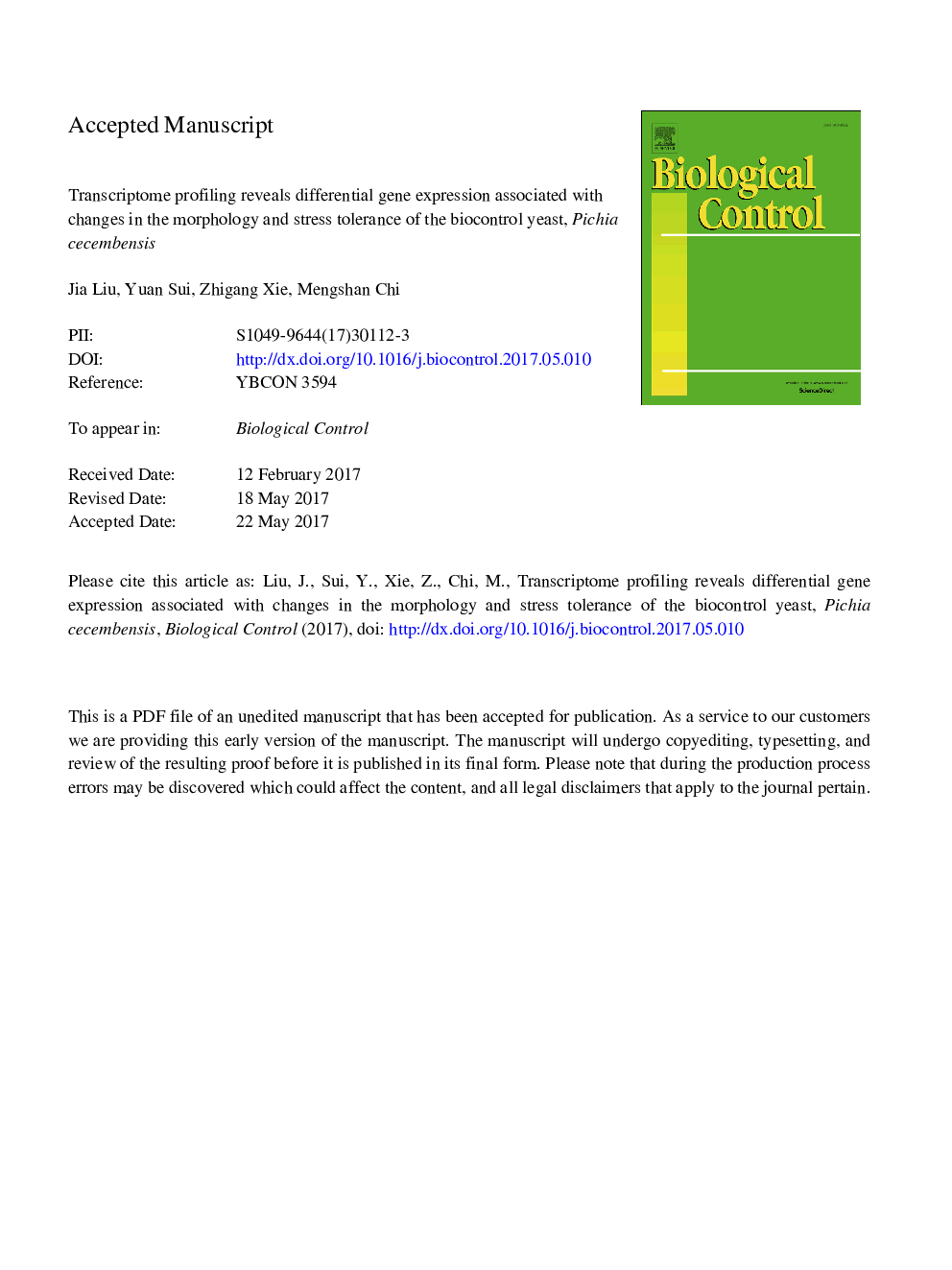| Article ID | Journal | Published Year | Pages | File Type |
|---|---|---|---|---|
| 8877700 | Biological Control | 2018 | 34 Pages |
Abstract
A considerable amount of research is being conducted on the utilization of antagonistic yeasts for the biological control of pre- and postharvest fungal diseases of horticultural crops. Previously, we found an increase in the stress tolerance and biocontrol efficacy of two biofilm-forming yeasts, Pichia kudriavzevii and Candida diversa, associated with the transition from a yeast-like to pseudohyphal morphology. In the present study, the biocontrol yeast, Pichia cecembensis was also found to exhibit a yeast-like or pseudohyphal morphology when grown on yeast peptone dextrose (YPD) with either 2% or 0.3% agar, respectively. The pseudohyphal form exhibited greater tolerance to heat, oxidative (H2O2), and salt (NaCl) stresses than the yeast-like form. Moreover, the biocontrol efficacy of P. cecembensis against blue mold (Penicillium expansum) on apple fruit increased markedly from the yeast-like form to the pseudohyphal form. A transcriptomic analysis of the two forms was conducted utilizing RNA-seq. A total of 20,991,425 and 25,009,573 clean reads, were obtained from the cDNA libraries constructed from the yeast-like and pseudohyphal forms of P. cecembensis, respectively. Over 3000 differentially expressed genes (DEGs) were identified between the pseudohyphal and yeast-like forms, with 2490Â DEGs being up-regulated, and 843Â DEGs being down-regulated. The identified DEGs were associated with metabolism, development, signaling, membrane transport, and stress response. In order to verify the results of the RNA-seq data, RT-qPCR was conducted on a subset of 24 genes. The present study provides new information on the physiology and genetic regulation of biocontrol yeasts that exhibit dual growth forms.
Related Topics
Life Sciences
Agricultural and Biological Sciences
Agronomy and Crop Science
Authors
Jia Liu, Yuan Sui, Zhigang Xie, Mengshan Chi,
